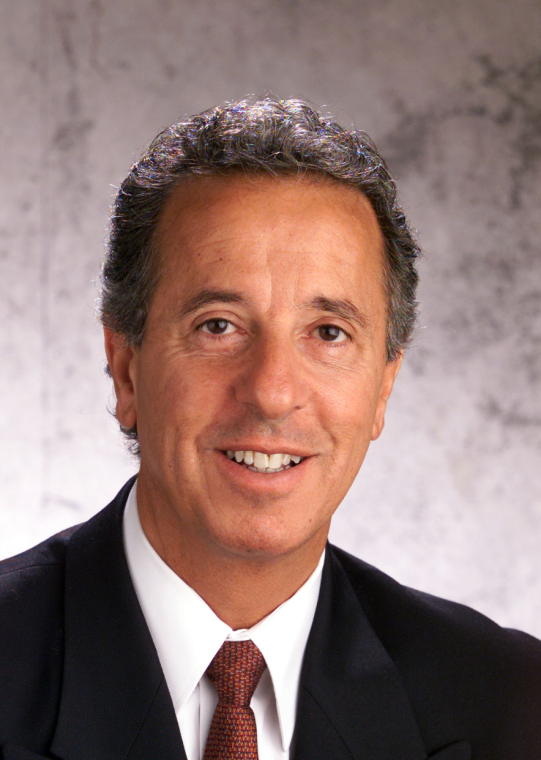
Emergency dental calls are not a surprise to any dentist. But when the emergency is the result of an accident and involves the severe and unsightly fracture of an attractive young lady’s front teeth, it is disheartening for both the patient and the dentist.
At the PAC hands-on programs we teach comprehensive restorative dentistry finished aesthetically. We apply the latest material science, in a systematic process to create beautiful smiles. Our focus is often on eight to ten upper anterior teeth. This particular case, impacting only the four front anterior teeth was challenging, it required a close collaboration with a skilled ceramist to blend the final result into the natural dentition.
The patient presented to my office the day after she had fractured teeth #7 and #8 (Figure 1). Tooth #9 had also been previously fractured as was evident with bonding. Because she works in a high profile clothing store and travels often for business, repairing her smile was critical.
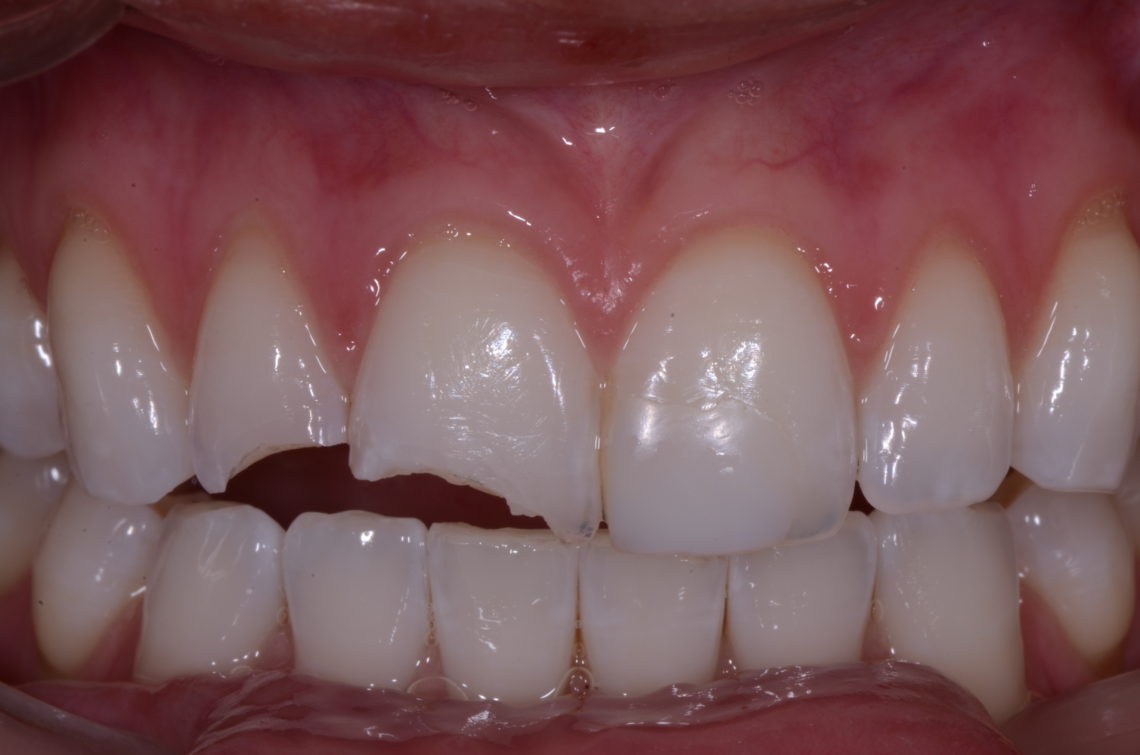
During the initial exam I noted the thin gingival tissue; her broad, attractive smile; and rather large, dominant teeth. The patient also stated she wanted white teeth and was willing to bleach, but she wanted to have a very natural appearance. The treatment plan was four anterior ceramic restorations and we also decided to slightly lengthen the centrals. Photos and models were taken. Temporary bonding was done and the patient was scheduled two weeks later, allowing some healing time from the trauma.
Two weeks later I prepped #7 through #10 (Figure 2). The challenge in this case was to be minimal in preparation yet incorporate the fracture areas. It was critical to be aware of the very thin gingival biotype; use of appropriate materials was needed for strength due to ceramic extension. The focus in this case was to have high aesthetic qualities, to create color with depth and vitality, and to project a youthful look. The temporaries were contoured and developed into the final “prototypes”. I took detailed photographs of the temporaries (Figure 3).
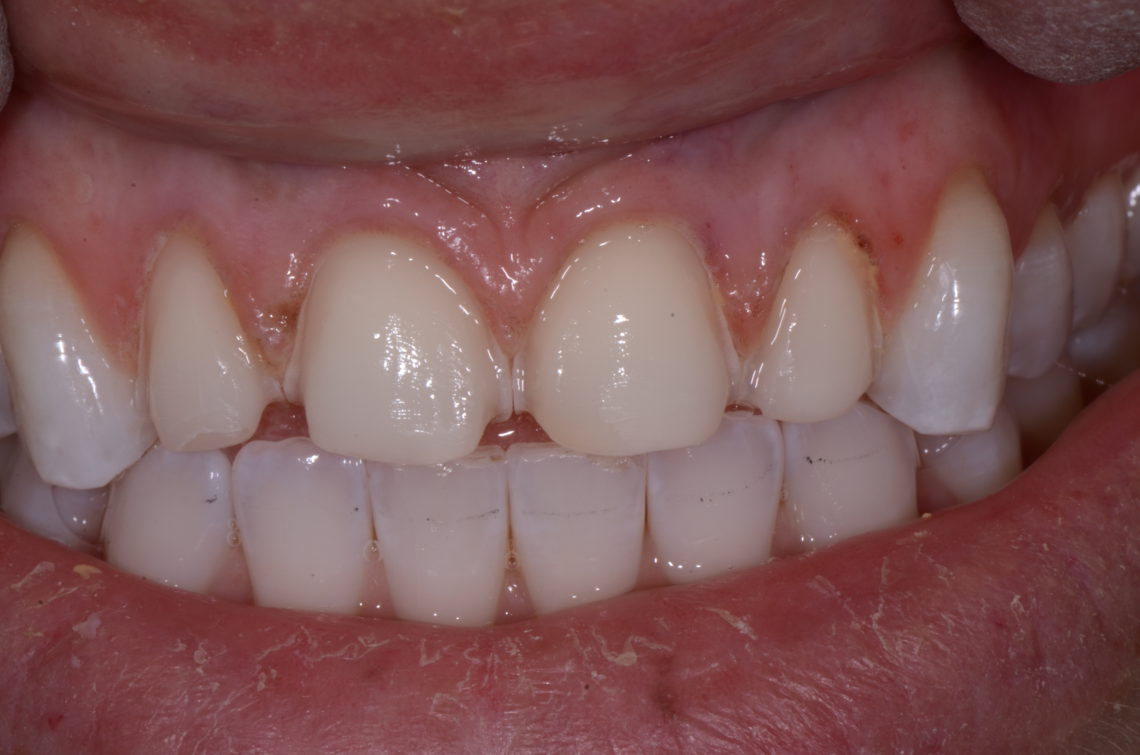
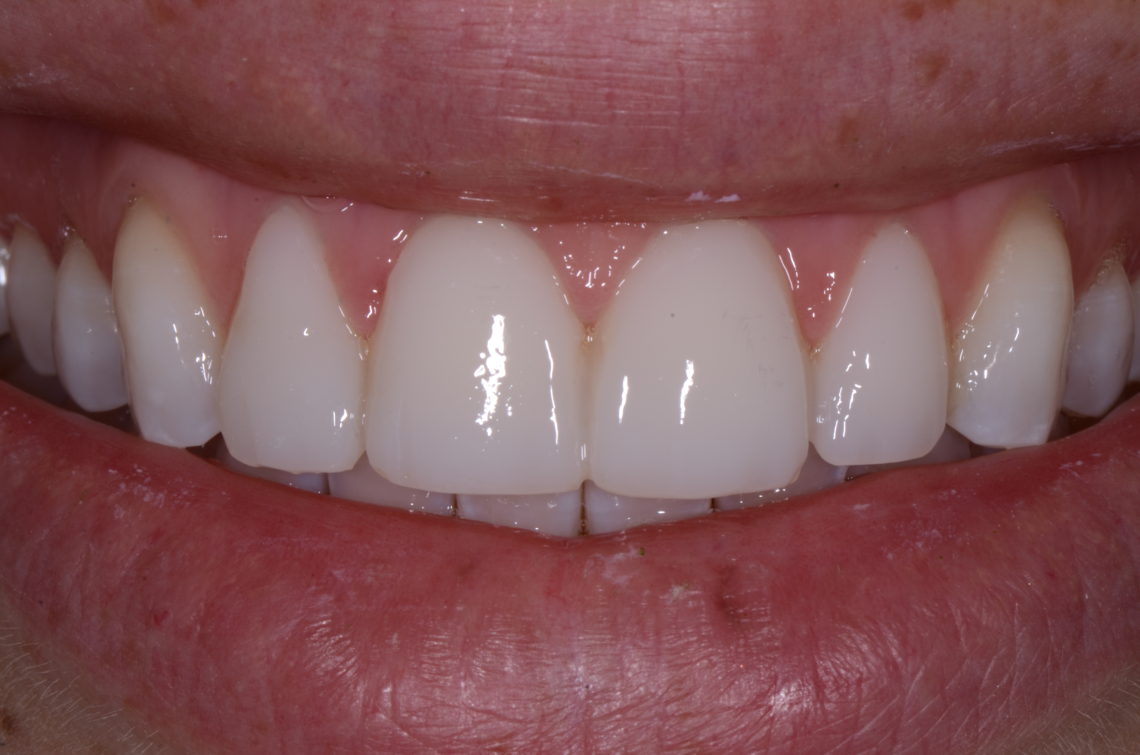
Communication with the laboratory was also critical to achieve the desired outcome. I didn’t want fabrication to commence until I had a chance to communicate with the smile designer at the laboratory. Providing Corr Dental Designs with as much information as possible was key to success. The laboratory and I had extensive discussions of what the patient and I wanted.
Corr Dental Designs made incisal and facial guides to follow precisely the prototype model. They selected the appropriate ingots and colors and artistically created four beautiful veneers with excellent depth of color and internal and fading incisal translucence. They followed our precise plan for color, texture, thickness, emergence, incisal edge position, length of centrals and laterals, narrow necks on laterals, taper, mesial line angles, and slight dropping on distal incisal edge of #7 and #10 (Figure 4).
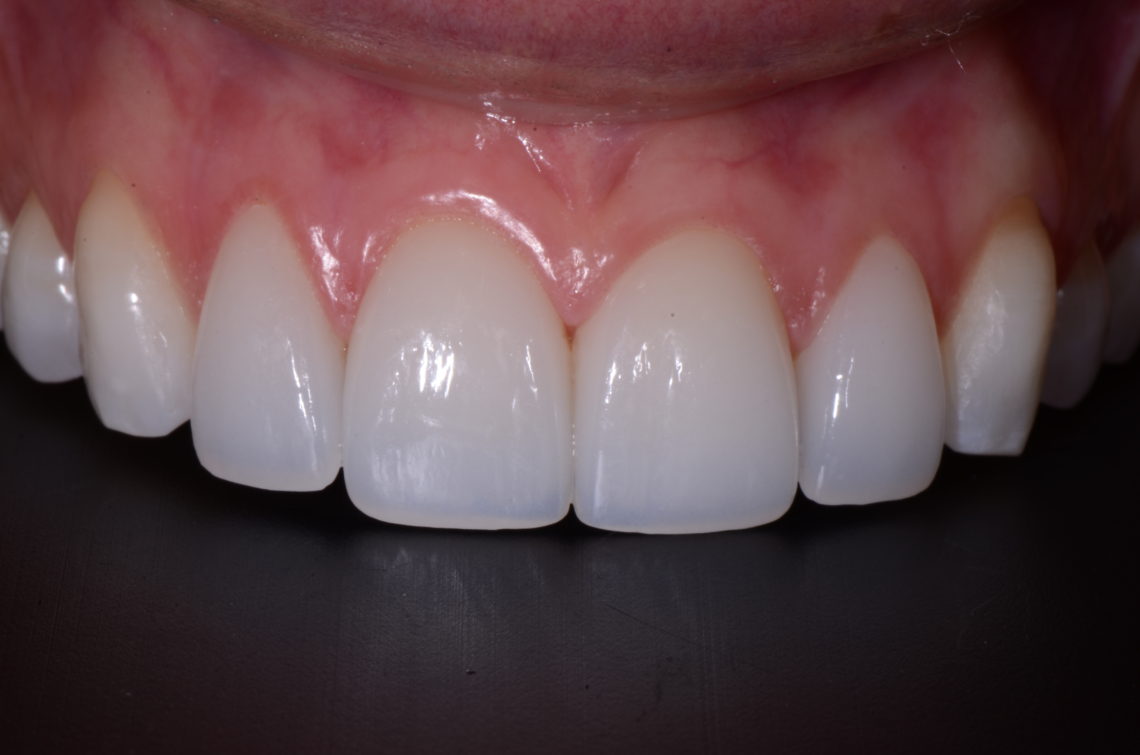
In conclusion: Throughout the treatment, the patient was very aware of the extra efforts put into her case. She recognized the difficulty of doing four teeth and blending them seamlessly into her natural dentition. She was aware of the time and extra communication required by our team. I am grateful for the support of the Pacific Aesthetic Laboratory Group. Needless to say – she was ecstatic!!
If you are interested in sending a case, or have questions about a case, please call Gary Vaughn at (714) 944-4581 or email him at gvaughn@thePAC.org. Visit the laboratory online at www.pacificaestheticdentalstudio.com.
